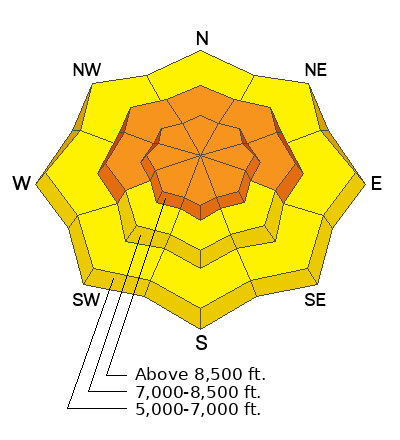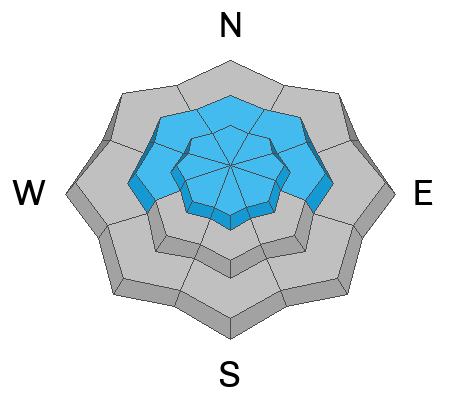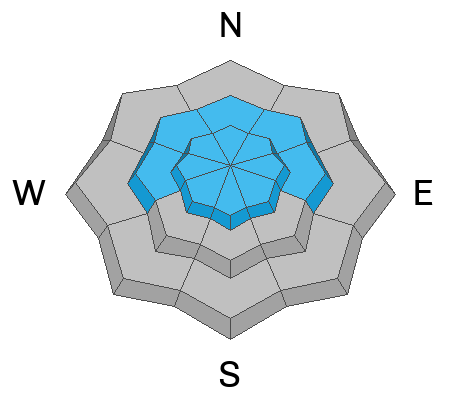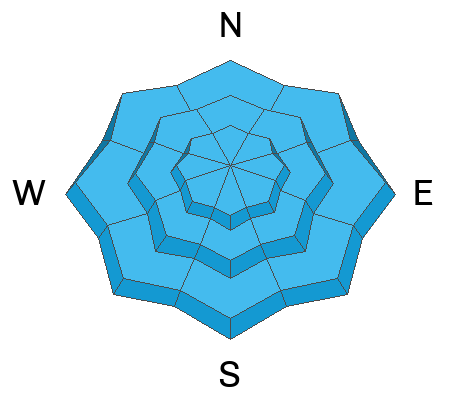Although stability is improving and obvious signs of instability may be less frequent or even absent, elevated avalanche conditions exist on all slopes above the Christmas Storm rain/snow-line. The snow at lower elevations was saturated by rain during the New Years storm, and much cooler temperatures since then formed solid refrozen crusts.
We've been able to find really nice and safer conditions in the meadows, on slopes at all elevations less steep than 30°, and at lower elevations.
It's snowing nicely this morning across the Logan Zone. There is three inches of new snow from overnight at the 8400' Tony Grove Snotel site where there is 6 feet of total snow, and it's 25° F. It's still pretty breezy at upper elevations, although the winds have subsided a bit and come around more from the west, with a southwest wind blowing 20 to 30 mph at the 9700' CSI Logan Peak weather station.
Snow will be heavy at times today, with 3 to 7 inches of accumulation possible. High temperatures at 8500' will be around 27°F, and winds will continue to blow out of the west-southwest on the ridges. Expect snow to taper off this evening and mostly cloudy conditions tonight, with low temperatures around 16° F, and winds continuing from the west.
*We've often seen avalanche accidents on the first nice day after an extended stormy period, and I'm afraid to say that the table is set for this weekend. We could see a bit of sun and clearing on Saturday, with high temperatures around 29° F.
Skiers found evidence of a recent large natural avalanche from around New Years in upper Logan Dry Canyon on a northwest facing slope at around 9000' in elevation. The avalanche failed on a buried persistent weak layer and was about 250 feet wide. The skiers observed no red flags and a snowpit dug nearby before they saw the avalanche showed deep, apparently stable snow..
HERE
We went up to look at the New Years avalanche on Red Pine Ridge on Wednesday... See avalanche report
HERE.
Be sure to check out all observations
HERE.











